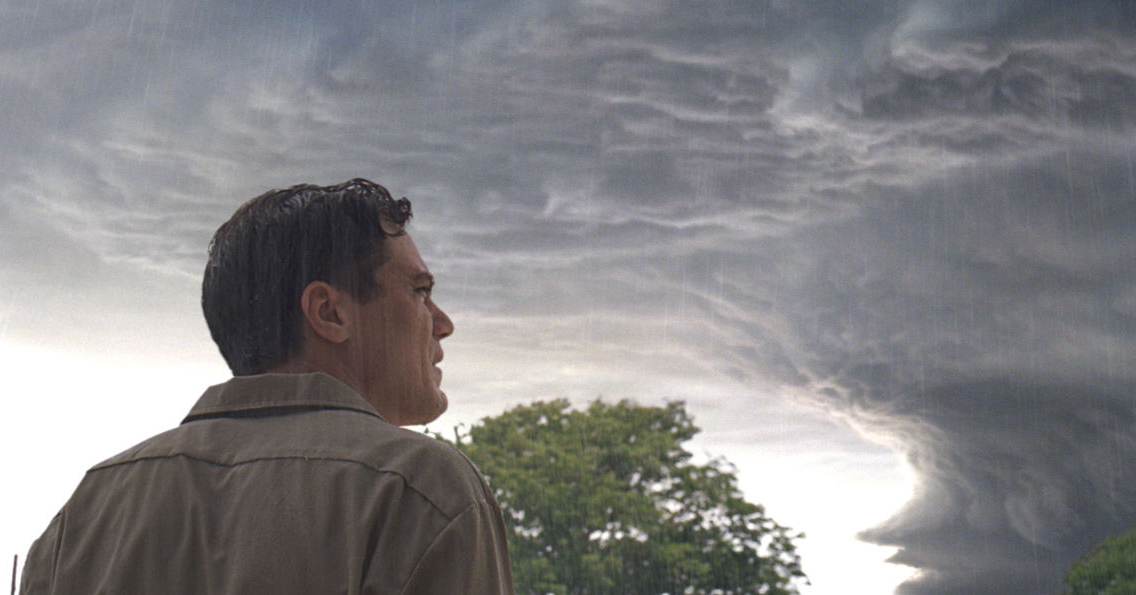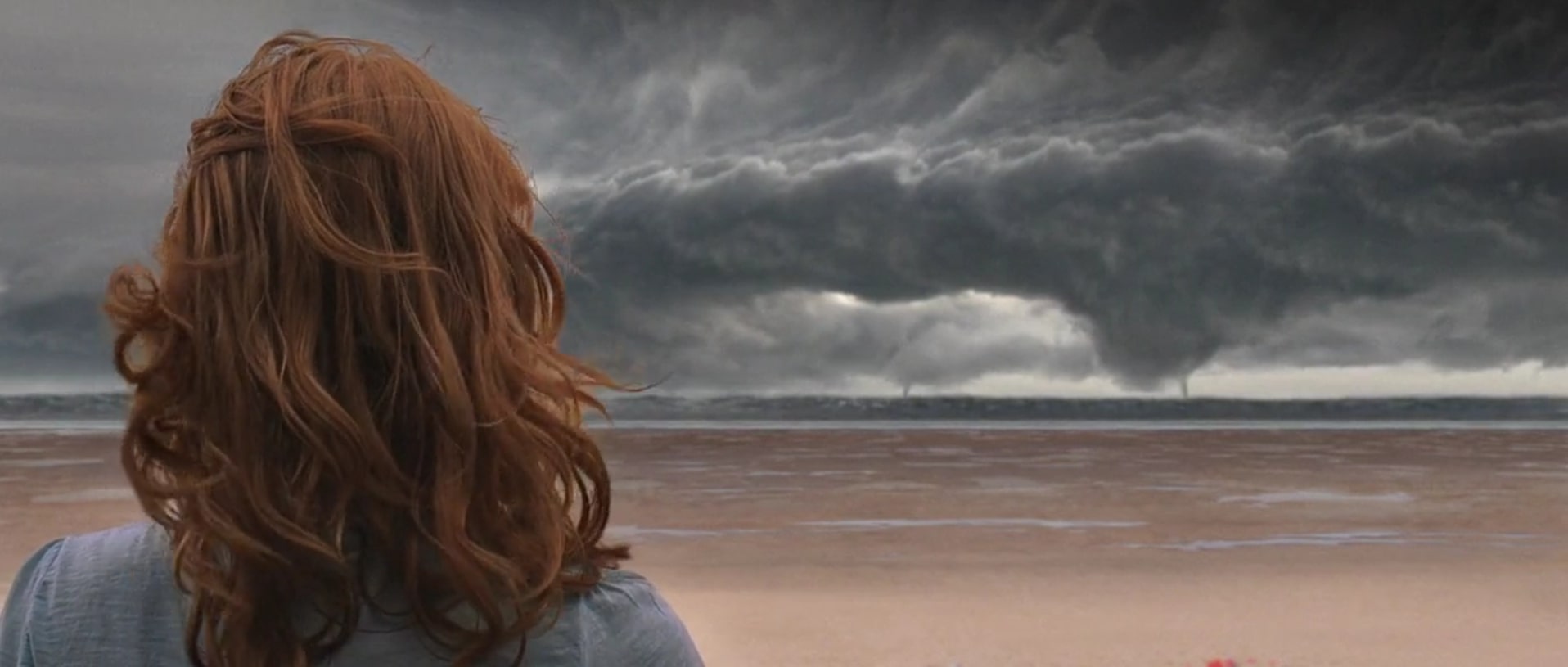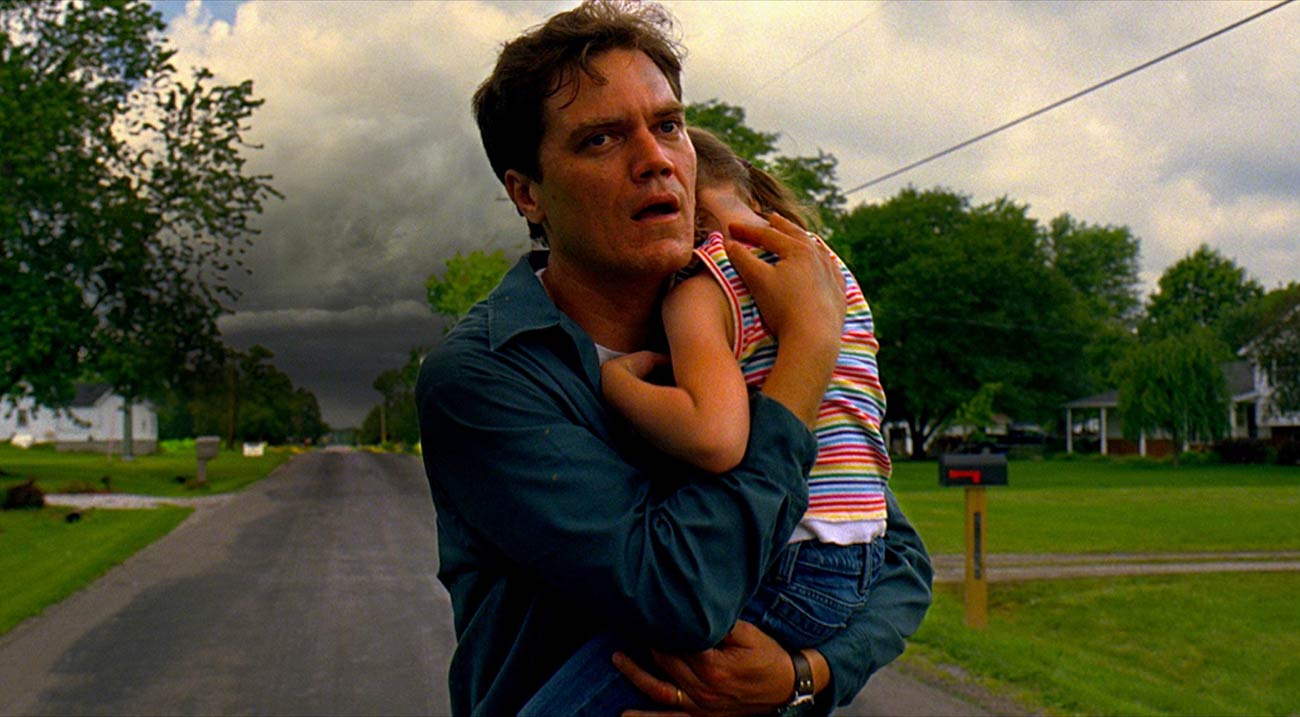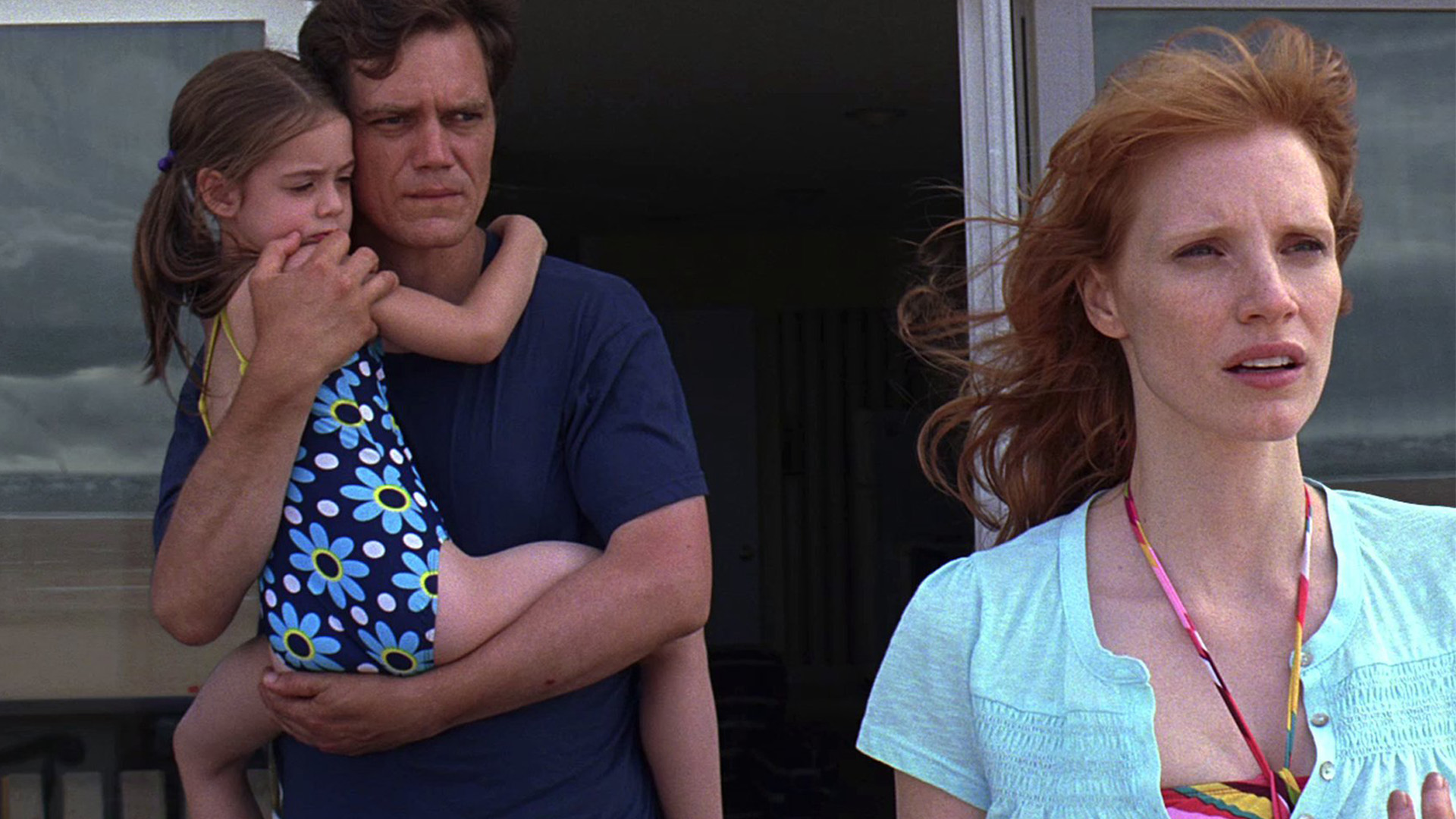It’s not often that a film comes along that ends at a note that is even more complex and interpretive than the filmmaker originally intended. But that’s what happened with the Jeff Nichols’ (‘Shotgun Stories’) psychological thriller drama ‘Take Shelter.’ According to Nichols, he had a “very strict idea” about the ending of the film. But as the audience members watch the movie, they come up with their own explanations about it. Nichols stated that this has been fascinating and rewarding for him. Here is everything you need to know about the ‘Take Shelter’ ending. SPOILERS AHEAD.
Take Shelter Plot Synopsis
Curtis LaForche (Michael Shannon) leads a happy life with his wife Samantha (Jessica Chastain) and daughter Hannah (Tova Stewart) in the small town of LaGrange, Ohio. He works as a crew manager at a local sand mining company and has earned the respect and admiration of his sleepy community. Hannah is deaf, and Curtis and Samantha are carefully planning for cochlear implant surgery. Fortunately for the family, Curtis’ job has a really great insurance plan. And with the help of a lawyer, they get the necessary clearance for the surgery.
It’s during this period that Curtis starts having dreams and visions. The dreams always start with a storm, and then they transform into something sinister. In one of the dreams, he is attacked by the family dog, and in another, by best friend and colleague Dewart (Shea Whigham). It is heavily implied that he sees Samantha attacking him in one of the dreams as well. Initially, he has trouble sleeping and wets the bed one night. After the local physician gives him mild sedatives, he has a seizure, during which he bites the inside of his mouth.
The hallucinations he starts experiencing are both visual and auditory. He hears claps of thunder despite a clear blue sky and sees birds forming strange patterns. He starts to believe that something is coming and takes out a loan that his family can’t afford to build a storm shelter on his property. A part of him acknowledges that something may be quite wrong with him. His mother was diagnosed with paranoid schizophrenia when he was 10 years old and has been institutionalized since. In fact, she started to display the signs right around the age that Curtis is now. His family doctor suggests that Curtis should see a psychiatrist, but the latter knows that he can’t afford that. So, he goes to the free clinic at a nearby hospital and starts attending sessions with a young counselor named Kendra (LisaGay Hamilton).

It’s only after the seizure incident that he finally opens up to his wife about what is happening to him. As the family tries to deal with this new challenge internally, its effects inevitably spill over to the outside. While building the shelter, Curtis used equipment from work with Dewart’s help and then removed Dewart from his crew. Their boss finds out and fires Curtis. To get revenge on Curtis, Dewart goes around telling people in their small community that Curtis is insane.
The LaForches become increasingly isolated. On Samantha’s insistence, the family attends a Lions Club community gathering, where an angry and frustrated Dewart comes to confront Curtis and punches him. The latter snaps, kicks out his assailant’s legs, and launches a vicious tirade at the other members of the community, telling them that none of them are ready for the coming storm.
Eventually, a storm does come, and the LaForches use the shelter that Curtis painstakingly built and the gas masks and the oxygen tank he bought. He continues to hear that the storm is raging outside and refuses to open the door. But Samantha makes him understand that if he wants to stay with her and their daughter, the first step to recovery has to be acknowledging that the storm has ended. And for that, he has to be the one who opens the shelter door.
Reluctantly and pensively, Curtis opens the door to find a bright, sunny day waiting for them. He and Samantha later visit the psychiatrist that the family doctor suggested. He tells them to go on a vacation and put distance between Curtis and the shelter. He also tells the LaForches that there has to be a conversation about Curtis’ prospective institutionalization after they return.
Take Shelter Ending: What Does the Climax Mean? Is There Really a Storm?
The family spends annual vacations at Myrtle Beach, South Carolina. Samantha is shown to save money for it throughout the film. But then Curtis gets fired, and she decides to use the money to keep the family afloat. In the ending scene, we see Curtis and Hannah building sandcastles, presumably at Myrtle Beach. Days away from the shelter seems to have done wonders for him. Suddenly, Hannah signs the word “storm,” and Curtis looks up to see what his daughter is seeing.

Samantha comes out of their rented cabin and is greeted by the rain that looks like fresh motor oil, just like in Curtis’ vision. She gazes out at the ocean and discovers that a storm of cataclysmic proportion is forming. She says to Curtis, “Okay,” filling that simple phrase with compassion and understanding. As the family braces themselves for the storm, the film ends.
Now, there can be multiple explanations for this; the most obvious of them is that this is another of Curtis’ dreams. The film starts by depicting him and Samantha as an ideal couple who are respected for their relationship in their community. However, as the film progresses and Curtis’ mental issues become apparent, their bond becomes fractured. At one point, Curtis even asks Samantha if she will leave him. Although she assures him that she won’t and gives details of her plan to get the family out of the financial problems, he is evidently still afraid of losing her and Hannah.

Another part of him fears that he will be separated from the family after being institutionalized, just like his mother. The film has already established that the family doesn’t have enough money to go on a vacation. This is especially true if Curtis has to be admitted into a facility, which will entail another expenditure. He is likely having this dream after he has been institutionalized, and it represents Curtis’ most ardent hope, which is for Samantha to believe him.
Another explanation is that there is really a cataclysmic storm on the horizon, and it’s coming toward the family. That reasoning is very Biblical and, by default, introduces certain fantastical elements to the plot, which were likely not the filmmaker’s intention.
A third explanation is that both Curtis and Samantha are hallucinating about the storm. Like Curtis, Samantha desperately wants things to return to the way they used to be, and as a result, imposes upon herself the same hallucinations as Curtis. It’s immaterial that psychology likely doesn’t work that way, but it can make sense as long as the filmmaker wants it in the context of the plot.

The fourth possible explanation of the ‘Take Shelter’ ending is that it’s all metaphorical. It’s neither real nor a dream, but a musing on the filmmaker’s part to bring his two protagonists together on the same page. In various interviews, Nichols has spoken about how he wrote the film after his marriage and injected a lot of the anxieties he had about his own relationship into the marriage between Curtis and Samantha. If we consider that, we can argue that the final scene is the director’s effort to give the characters a happy ending beyond the constraint of reality that he created. In this utopic scenario, Curtis and Samantha have found their way back to each other.
Read More: Where Was Take Shelter Filmed?

